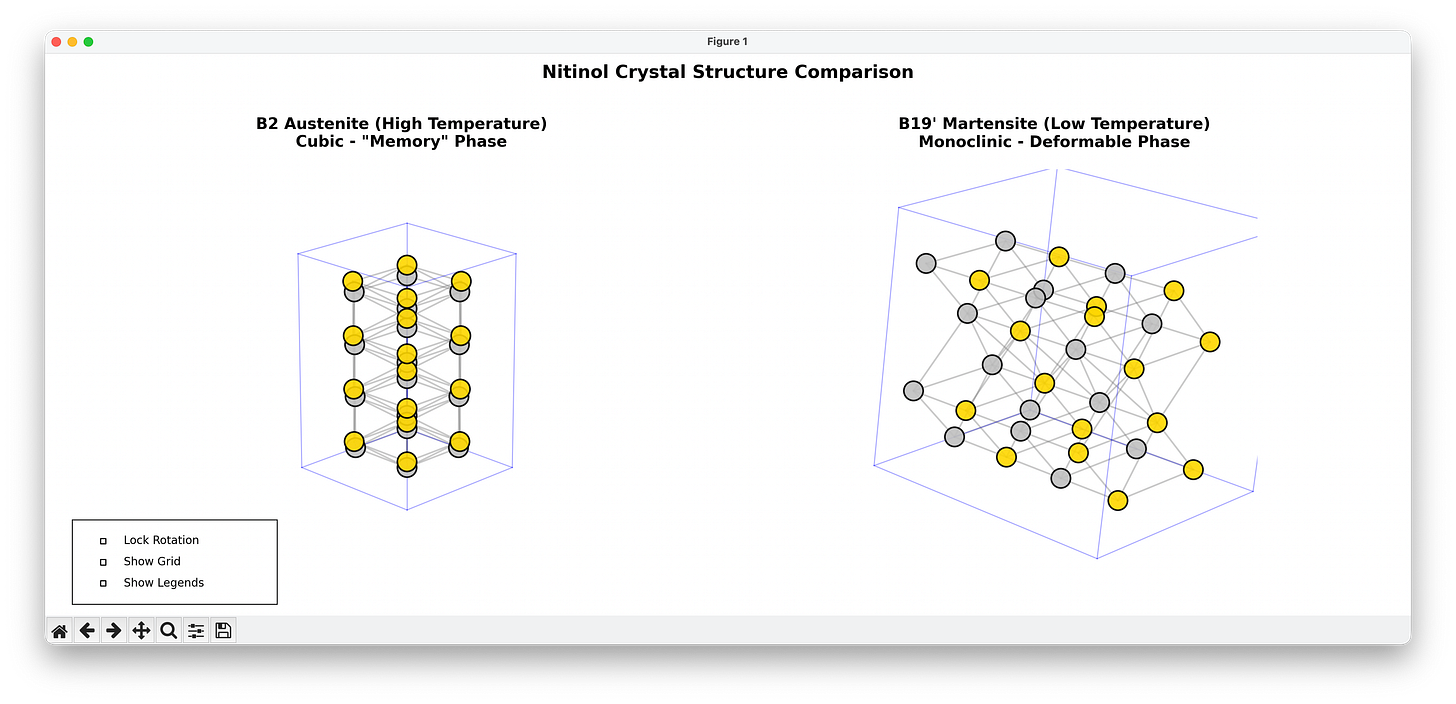We don't need AGI to do science with kids
The Magic of Nitinol with AI
15 hours drive turned a casual conversation with Grok into a science experiment with my kids, and a piece of software to demo the nitty gritty. Interested?
Great. So here’s what happened. I was driving from Austin to Breckenridge and I got tired of audio books and started chatting with Grok. The AI enlightened me about a ton of interesting new developments in material science, from self-healing concrete to cloud-like materials that crystalize into razor sharp glass. What I really wanted to know was how to teach all of this stuff to my kids, and that’s when we got to NiTi.
Nitinol is a mind-bending nickel-titanium alloy that “remembers” its shape and then snaps back into it, when heated. It’s the stuff behind medical stents that expand in your arteries, certain car components, and robot muscles.
Cool, I thought. We can definitely demo that at home. I got the wire from Amazon, and gleefully demonstrated how a spring uncoils itself into a straight line when submerged into hot water.
Kids were happy. There were some wows, but no applause. Kids still wanted to know why, why does this happen? Talking atoms is one thing, but seeing them?
AI to the rescue!
I spent an hour at a coffee shop talking to Claude Code about what I wanted to do, and the tool was born.
On the left: The high-temp austenite state, a perfect grid of yellow spheres (nickel and titanium atoms) marching in symmetric rows.
On the right: The low-temp martensite state, all sheared and staggered, gray and yellow atoms sliding past each other in a chaotic tangle.
Now, when I show my kids the Nitinol wire experiment (twist it cold, heat it with a hairdryer, watch the recoil), I can pull up this and say, “See? The atoms on the right want to regroup, they want to be in the symmetrical composition and don’t want to be bent. Heat just gives them the nudge.”
Okay, fine, they probably still don’t understand. But…
It will take more effort on my part, but I can keep expanding the tool outwards, to be able to zoom in and out between a write, and its atomic structure, eventually visualizing the bend, and then snap back. It’s more work, but it’s not impossible.
We don’t need to be waiting for AGI to solve “everything,” we just need to use whatever AI we got to solve the problems in front of us, turning “what if?” into “watch this!”
I am hoping for a future when we have more time to solve these problems in front of us. What do you say—ready to bend reality?
— Kirill
p.s. If you want more science, read my transcript discussion with Grok. Well, the short version, I will spare you the 15 hour drive one.
p.p.s. Nitinol Phase Visualizer is now on Github.



